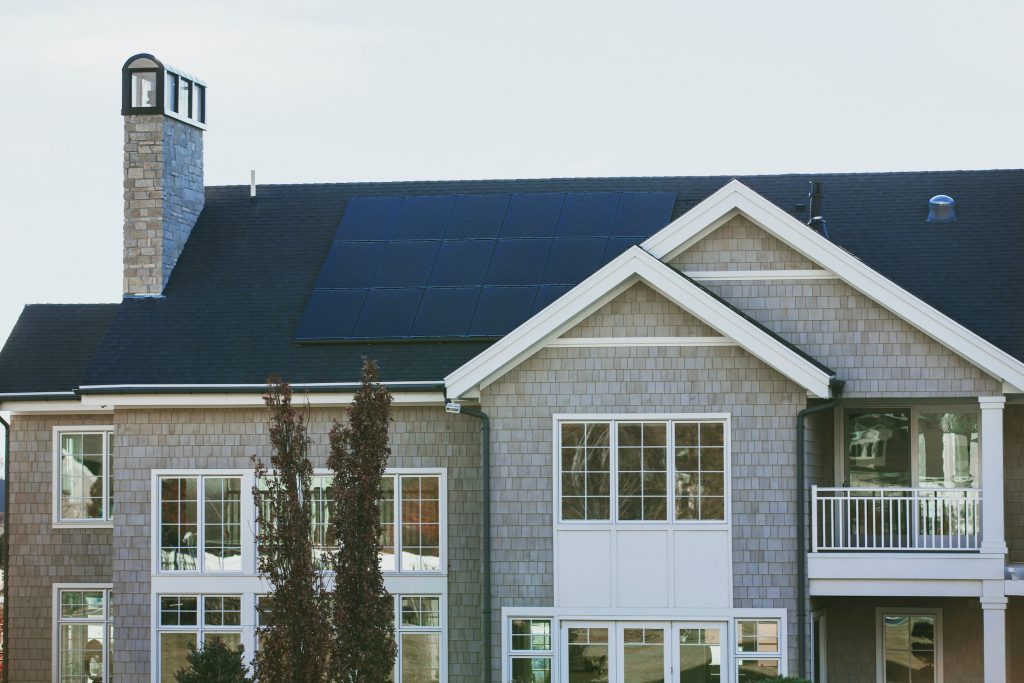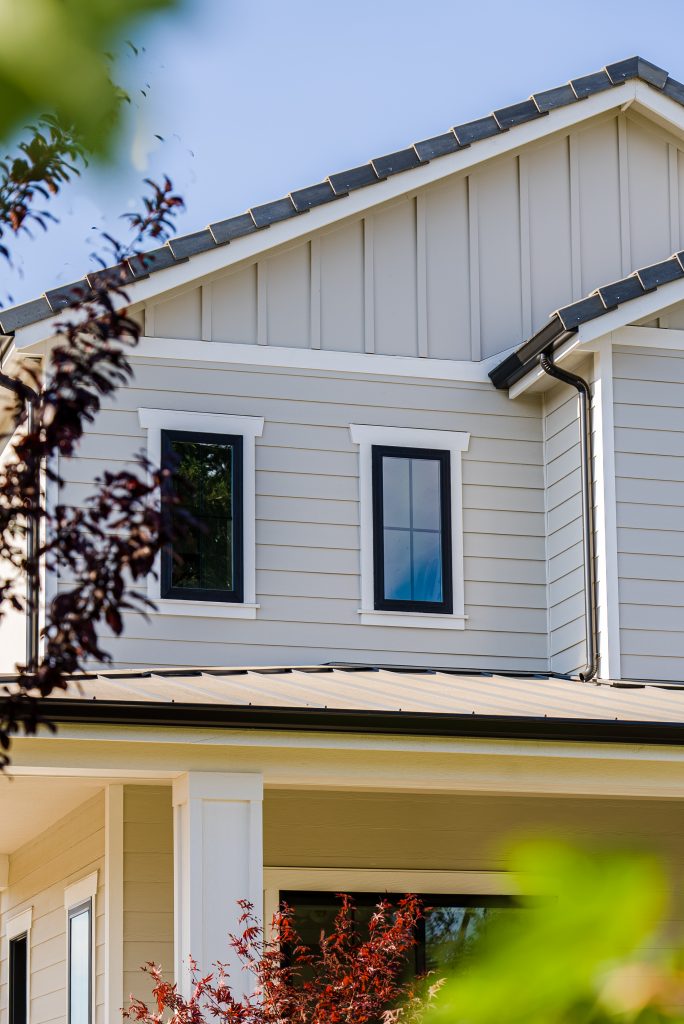As our planet grapples with climate change, the construction industry’s environmental footprint has come into sharper focus. One area ripe for improvement is the selection of siding material for buildings. Traditionally, choices like vinyl and aluminum have dominated the market, but these materials pose environmental issues. Today, we turn the spotlight onto a better alternative – eco-friendly siding. This term may sound unfamiliar to some, yet it holds the potential to revolutionize construction practices and reduce our environmental impact.
What is Eco-Friendly Siding?
Eco-friendly siding refers to exterior cladding options with minimized environmental impacts. These materials are typically derived from renewable sources, or they offer impressive durability and recyclability. While there’s a wide variety of eco-friendly siding, some popular choices include fiber cement, wood, and recycled steel.
Fiber cement siding, for instance, is an amalgamation of cement, sand, and cellulose fibers. It offers a balanced blend of durability, aesthetic appeal, and minimal maintenance. The wood siding, traditionally used for centuries, can be sustainably sourced from well-managed forests, making it a renewable option. Recycled steel siding, a less known but promising option, utilizes steel waste, giving it a second life and helping reduce landfill burdens.

Environmental Impact of Traditional Siding
Traditional siding materials like vinyl and aluminum are widespread, but their environmental impact is significant. Vinyl, for example, is a petroleum-based product. Its production involves energy-intensive processes and releases harmful pollutants. Notably, dioxins are a by-product of vinyl manufacture and incineration, posing severe health risks and long-term environmental degradation.
Aluminum siding, while durable and recyclable, requires vast amounts of energy for its extraction and processing. The bauxite mining necessary for aluminum production devastates landscapes and ecosystems.
Moreover, the limited life spans of these materials further compound their environmental costs. Often, once their service life ends, they become landfill waste, contributing to our planet’s growing solid waste crisis. These sobering realities highlight the urgency for environmentally friendly alternatives in our construction practices. Sustainable siding options can address these issues, paving the way for a greener future.
Benefits of Eco-Friendly Siding
An essential advantage of eco-friendly siding is its lower carbon footprint. For instance, the production process of fiber cement siding emits less CO2 compared to vinyl or aluminum siding. Additionally, using recycled steel for siding repurposes an abundant waste product, eliminating the need for energy-intensive mining and processing.
This lower carbon footprint is an intriguing advantage, not just from an environmental perspective, but also for construction projects aiming for green building certification. An often-overlooked fact is that building materials account for a substantial portion of a project’s overall environmental impact. Therefore, choosing eco-friendly siding can help projects meet stringent certification criteria.
Besides the reduced carbon footprint, eco-friendly siding materials like fiber cement and wood are recyclable. Post-use, they can enter a new lifecycle instead of ending up as landfill waste. With global waste management systems under stress, this recyclability has a notable positive impact.
Then there’s the energy efficiency of eco-friendly siding options. For example, wood siding provides excellent insulation, keeping buildings warmer in winter and cooler in summer. The result? Reduced reliance on energy-guzzling heating and cooling systems, contributing to a smaller energy bill and a smaller carbon footprint.
In terms of durability and maintenance, eco-friendly siding materials like fiber cement and recycled steel outperform traditional alternatives. Their longevity reduces the frequency of replacement and the associated environmental costs. Moreover, their resistance to common siding issues – such as rot, insects, and fire – minimizes maintenance needs, an often-underestimated source of ongoing environmental impact.
Interestingly, despite their environmental and practical benefits, eco-friendly siding materials don’t compromise aesthetics. Wood siding, for instance, provides a timeless, natural look, while fiber cement can mimic various finishes, including wood, at a fraction of the environmental cost. Recycled steel, with its modern, sleek appeal, caters to contemporary design preferences.
The intersection of practicality and aesthetics in eco-friendly siding is a fascinating development in construction. It refutes the outdated notion that sustainability and style can’t coexist. Instead, it proves that we can build aesthetically pleasing structures without burdening our planet.
In conclusion, the benefits of eco-friendly siding are multifold and significant. The adoption of such materials helps reduce carbon emissions, waste generation, and energy consumption. Plus, they offer durability, easy maintenance, and aesthetic versatility. As such, eco-friendly siding represents an intelligent, forward-thinking choice in modern construction, one that addresses the growing demand for sustainable practices.
Case Studies of Eco-Friendly Siding
Let’s delve into a few real-world examples where eco-friendly siding shines.
This exquisite residence uses two types of eco-friendly siding – T1-11 main siding and Cedar 1×6 Tongue and Groove as a front accent. T1-11 siding is an engineered wood product known for its structural strength and rustic aesthetic. It’s a durable and versatile material, enhancing the property’s resilience for the long haul.
The Cedar 1×6 Tongue and Groove, employed for front accents, is an icon of sustainable design. Cedar wood, being naturally rot-resistant and insect-resistant, promises durability while minimizing the need for harsh chemical treatments. Plus, it brings a warmth and richness to the home’s appearance, marrying sustainability with style.


In Residence Orangevale, we see another beautiful application of eco-friendly siding materials, specifically James Hardie Lap Siding and James Hardie Board and Batten for gable accents. Both are types of fiber cement siding, a material recognized for its eco-friendliness.




James Hardie Lap Siding offers durability, color variation, texture richness, and low maintenance – all crucial considerations for any homeowner. Its eco-friendly edge comes from its composition, made of sand, cement, and cellulose fibers. Unlike vinyl or aluminum, its production has a smaller carbon footprint and generates less pollution.
The James Hardie Board and Batten installed in gable accents introduces an additional design dimension. Its vertical lines and rustic charm add timeless appeal to the property while providing the environmental benefits inherent to fiber cement.
In both these cases, eco-friendly siding options have demonstrated their ability to contribute to aesthetic appeal, durability, and environmental sustainability. They stand as excellent examples for those considering greener choices in construction and renovation projects.
How to Choose and Install Eco-Friendly Siding
Selecting eco-friendly siding involves considering factors like climate, budget, aesthetics, and local building codes. Research various materials, noting their pros and cons. Don’t overlook durability, maintenance, and recyclability. Engage a professional installer well-versed in eco-friendly products. Correct installation maximizes siding’s lifespan and performance, enhancing its environmental credentials.
Eco-friendly siding presents a compelling alternative to traditional materials, given its lower environmental impact, durability, and aesthetic appeal. Real-world examples like Pahatsi Rd Residence and Residence Orangevale illustrate its successful application. The construction industry’s shift toward eco-friendly siding can significantly reduce its carbon footprint, promoting sustainability and creating healthier living spaces for future generations.

